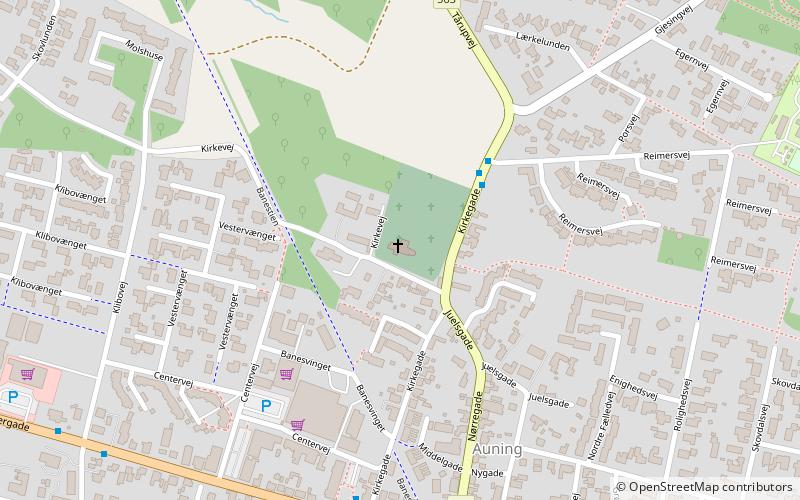Auning Kirke, Auning


Facts and practical information
Auning Church is located in Auning on Djursland.
The church dates from the 12th century and was built in ashlar, but was later rebuilt to its present form. Around 1500, the flat beamed ceiling was replaced by vaults - a cross vault in the chancel and two star vaults in the nave - while the tower, porch and third bay in the nave - all in monk's stone - were added in 1616 by a builder named Mathias, who also rebuilt the nearby manor of Gammel Estrup for Eske Brock, whose owner also owned the church until it passed into self-ownership in 1921.
Next to the porch are two ashlars with rope ties. They were originally corbels in the chancel arch, but when this was extended they were removed.
In 1631, a small hospital, or poorhouse, was built in the original churchyard. The initiator of this was Marshal Jørgen Scheel at Gammel Estrup. It functioned until about 1914.
In 1699 a burial chapel was built for the Scheel family in an extension to the north. Here is an epitaph for Jørgen Scheel, who died in 1695. It was made by the Belgian sculptor Thomas Quellinus, who lived in Copenhagen and a few years earlier in 1691 had made a chapel for Colonel Hans Friis at Hørning Church near Clausholm. The king had only allowed the widow a "cheap epitaphium - on condition that the church in its building is not thereby damaged", but there is nothing particularly cheap about the result, which is a fine piece of Baroque work in marble. In the crypt of the crypt there are today eight sarcophagi in marble and eight in sandstone, the last one lowered in 1844.
The interior of the church is decorated with frescoes, including a book of poems. They date partly from the time immediately after the vaults were built and partly from the time after the Reformation. The latter is clearly shown by the fact that the artist has made himself known in one place: "Rasmus Ryter maler - h. alleus 1562". However, the year appears in several places. Among Ryter's contributions to the frescoes is the depiction of St Laurence with a grate and a book of poems, which must be said to be a rather curious motif for a post-Reformation decoration.
The frescoes were whitewashed at an unknown date and partially uncovered in 1885, but whitewashed again in 1902, finally being fully uncovered in 1953 and 1955.
Kirkevej 2Auning
Auning Kirke – popular in the area (distance from the attraction)
Nearby attractions include: Gammel Estrup Manor, Sjellebro Stone, Skaføgård, Løvenholm.






